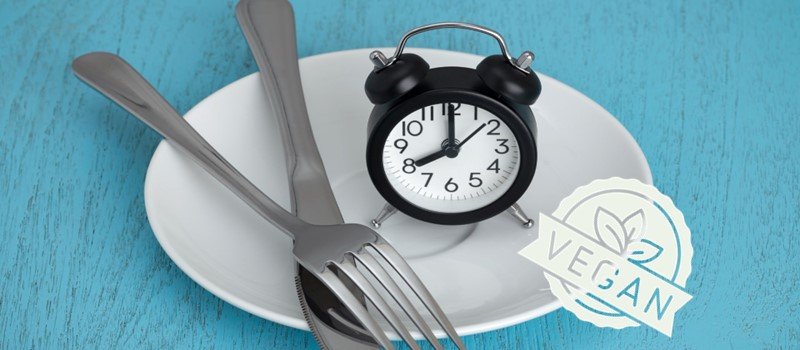Let’s investigate seitan vs tofu vs tempeh, and which is better as a protein for vegans. There isn’t a single source of high-quality protein to stick to, which is fortunate for vegans. It opens the door to greater variety and differences in taste, aroma, texture, and more.
The variety of vegan proteins on off today is a good thing because some vegan protein sources are lower in sodium than others or have other characteristics that are preferable to more restrictive eating plans.
Also, it’s possible to be allergic to tofu or soy, so access to other protein options while sticking to vegan standards helps to stay healthier.
Our article compares seitan vs tofu, and asks which is better. We also look at tempeh, this is because our readers often ask about it as well.
What Is Seitan?
The question of seitan vs tofu vs tempeh is a key decision point when shopping for healthy proteins.
Whether you’re starting as a vegan or just trying to mix things up, it might be high time to compare the two.
Seitan (pronounced “Say Tan”) is smooth in appearance, so it can be reminiscent of some types of tofu.
However, this is where the similarities fall away.
Its texture is more complex than some other vegan proteins. It is chewy, so it has a far more complex consistency compared to silken tofu.
It originates from vital wheat gluten. Therefore, it is entirely inappropriate for a vegan who’s needing a gluten-free diet.
Furthermore, anyone suffering from celiac disease will find it utterly incompatible with their dietary restrictions.
Seitan is produced by adding water to the vital wheat gluten. Then it is kneaded to produce a dough.
Washing it extracts any starches present to the point where just the protein sources remain.
It can be purchased ready to go into a recipe immediately or as wheat gluten in a dried form.
Then you’re free to add water as required.
With the store-bought seitan, it can have other ingredients including various herbs, spices, or sodium added.
This can result in a higher than desirable sodium level, which is why some vegans prefer to get the wheat gluten and mix it themselves.
This isn’t something to be avoided, it is really easy to do and means that you can get the perfect flavor you need.
What Is The Protein Count Of Seitan?
25 grams of protein is to be expected from 100 grams of Seitan.
The protein count for Seitan is given approximately based on a typical 100-gram portion.
For each food producer, the exact protein count will vary. As mentioned above, sodium is higher unless making it yourself.
The calorie count is 126 calories per 100 grams, so it’s close to double that of tofu (less than tempeh though).
There are 5.3 grams of carbs and 0.6 grams of fat, making it less fatty than tofu and tempeh, and significantly heavier on the carbs too.
What Is Tofu?
Tofu is produced by placing dried-out soybeans in H2O for a good soak. This does the job of letting the water get inside the bean.
They’re then boiled up.
The process follows closely with how some vegan milk alternatives are produced, such as almond milk.
Once boiled and strained, the remaining liquid is then set into large, shaped molds, with vegan thickening agents added.
Then they’re left to firm up.
The familiar block of tofu comes that way through the mold’s shape.
One of the advantages of tofu is that there are different versions of it.
For example, silken tofu is smooth with a lighter texture. This allows it to be blended more easily for vegan smoothies.
By comparison, extra firm tofu is better for slicing and going on the grill.
It’s also without much natural flavor enabling it to absorb the flavors of the dish more readily.
Some people have allergies including one to soy. Being that tofu is made from soy, this may rule it out (perhaps tempeh too, but more on that below).
Tofu can still cause stomach issues for people who aren’t allergic but have some sensitivity to soy.
Also, being bean-based, it can cause unintended gas, though at lower levels than regular beans (it has fewer oligosaccharides, which is the main culprit).
Top Tip: Sprouted tofu is another option because it creates fewer gassy issues too.
What Is the Protein Count?
11 grams of protein comes with a 100-gram portion of tofu. Both seitan and tempeh have around 20-25 grams, so the protein is lower with tofu.
The sodium is only 4.3 mg; you’ll barely taste it.
The calories are 91 for a 100-gram portion.
Seitan is more calorie-dense at 126 calories, so anyone on a diet may prefer tofu over other protein options.
The 6 grams of fat is not alarming; however, Seitan is lower at 0.6 grams.
The 1.3 grams of carbs are barely noticeable compared to fully 5.3 grams with Seitan, so if you’re pursuing a low-carb diet, then tofu is a solid option.
What About Trying Tempeh?
Tempeh is another soy-based protein source. It uses the whole bean in a fermented state. This helps to give it a fuller, richer texture and some people believe, added flavor too.
The fermenting is less rigorous with tempeh preparation.
Some beans are still inside the tempeh and on its surface too. So, there’s no mistaking it for tofu.
It’s thought to have come from Indonesia. Now tempeh has found its way into vegan cooking as a separate soy-based protein source besides the more popular tofu.
It can go into an Asian-inspired stir fry, get cubed for a curry, be used as mince, or sprinkled over other ingredients too.
Some tempeh is smoked to lend it a BBQ-like taste, so it can replace deli meats or be used as one topping in a vegan pizza.
This makes it extremely flexible for a cook who likes to go with the flow.
Just like with tofu, soy can cause allergy issues for people who suffer in this way.
You may digest tempeh better than tofu, so don’t rule it out completely unless you have significant issues with anything soy.
The reduced fermentation used in its preparation can help to decrease stomach issues compared to tofu.
So, it’s possible to be okay with tempeh but not with tofu.
What Is the Protein Count?
Tempeh is rich in protein at 20 grams. It matches seitan and outperforms tofu in the protein stakes.
The sodium is only 14 mg from 100 grams of tempeh, so the sodium level will barely be noticed and likely won’t contribute to putting you over your daily limit.
It is a fattier protein source at 12 grams compared to 6 grams for tofu and only 0.6 grams for seitan.
However, it has a good amount of carbs at 8 grams. Overall, it is perhaps the most balanced of the three protein sources between its protein, carbs, fats, sodium, and calorie count.
Seitan vs Tofu vs Tempeh: Which Is Best for What?
Here we have completed a comparison of seitan vs tofu vs tempeh, we have summarised it in the table below, but for further explanation, read on.
| Seitan vs Tofu vs Tempeh | |||
| Seitan | Tofu | Tempeh | |
| Calories | 126 | 91 | 198 |
| Fat | 0.6 | 6g | 12g |
| Protein | 25g | 11g | 20g |
| Carbs /100 grams | 5.3g | 1.3g | 8g |
| Sodium | 13mg | 4.3mg | 14mg |
| Potassium | 44mg | 142mg | 410mg |
| Base | Vital Wheat Gluten | Soy Beans | Soy Beans |
| Gluten Free | No | Yes | Yes |
| Soy Free | Yes | No | No |
| Low Fat | Low Fat | Moderate Fat | Higher Fat |
| Low Sodium | High Sodium | Low Sodium | Low Sodium |
| Low Calorie | Low Calorie | Moderate Calorie | Highest Calories |
| www.awesomeveganblog.com |
Here we run down a few options for why one protein source might be better than another, all make great vegan meat alternatives, but it will depend on your health needs and health goals, which is the best for you.
Soy Sensitivity
When you’re sensitive to soybeans and soy specifically, then you may either avoid all protein sources that use it or try it out gingerly before committing.
Both tempeh and tofu come from soy, so they might both need avoiding. With that said, some people can digest tempeh better than they can any kind of Tofu.
However, if you’re someone who has serious soy allergies, then look at seitan instead.
Gluten Sensitivity
Seitan is produced with wheat gluten, so it will raise red flags for anyone who has a reaction to gluten in their meals.
If you’re someone like that but do okay with soy, then try tofu or tempeh instead.
Even if you try to avoid gluten but react mildly to tofu, perhaps tempeh might be better.
It’s worth trying if your reaction to tofu was minimal. Or steer clear entirely and find a different plant-based protein that your stomach will readily accept.
Low-Fat Diets
When you’re on a low-fat diet, then you’re examining (or should be) all your intake to see how it stacks up.
Seitan as a protein source is extremely low in fat at just 2 grams per 100 grams of the food.
Tofu isn’t bad at 5 grams of fat, but tempeh at 11 grams might be too much for you.
Low-Sodium Diets
Both tofu and tempeh are low sodium protein sources at 7 mg and 9 mg, respectively.
Seiten on the other hand gives you a large part of your day’s sodium in a single shot. It has approximately 417 mg of sodium.
One way around it is to purchase it as wheat gluten that’s not been salted and to mix it yourself to make seitan from a personal recipe. Then you have greater control of the sodium levels.
Low-Calorie Eating Plans
Anyone looking to eat fewer calories – not necessarily specifically lower fat – has a few options. Tofu at 76 calories is the lowest. Be mindful of marinated and other tofu versions because these will have distinctly different calorie levels. Seitan at 143 calories is double that of regular tofu. Tempeh at 193 calories should be avoided unless you cut back elsewhere on what you put on the plate or in the bowl.
Low-Carb Eating Plan
If you are eating a low-carb lifestyle and you are trying to keep carbs low, Tofu is the lowest carb count with only 1.3 grams of carbs per 100 grams.
Tempeh is the highest in garbs with 8 grams per 100, and seitan is in the middle at 5.3 grams of carbs.
Seitan vs Tofu vs Tempeh: Summary
Seitan vs tofu vs tempeh is an interesting debate, depending on your health needs and health goals, each one has something to offer. If you are gluten intolerant, seitan is not for you. If you are allergic to soy, then tofu and tempeh are not for you. After that, it will depend on what your health goals are in relation to calories, fat, protein, carbs, sodium, and potassium. Which is your favorite and why? Let us know in the comments below.


![Vegan Farmers Markets [Where To Find Them and What to Buy]](https://awesomeveganblog.com/wp-content/uploads/2022/06/Vegan-Farmers-Markets-Where-To-Find-Them-and-What-to-Buy.jpg)

